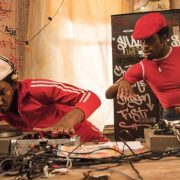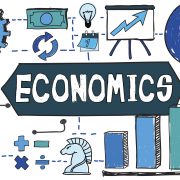To most people, an “anything goes” approach on the road seems crazy, to say the least. And why shouldn’t it? Cars weigh thousands of pounds and once moving at high speeds are essentially large deathtraps all charging towards each other.
On its own, this concept is concerning enough without having to imagine what would happen in the absence of all traffic signals. How would cars know when to stop and when to go? Surely this type of system, or lack thereof, would result in increased fatalities and sheer madness on the streets.
But while conventional wisdom says that some sort of traffic authority is needed in order for individuals to travel safely from point A to point B without killing each other, spontaneous order provides an alternative to this tradition.
Broken Traffic Lights
We have been trained our entire lives to obtain permission from authority figures before acting. Since the age of five, those of us sent to public schools were even taught that we must ask permission before doing something as simple and self-regulating as leaving our desks to grab a tissue or use the restroom.
It is no wonder then, that so many naturally accept government regulation as a necessity. Our lives have been riddled with rules and we fear what might happen without them.
However, as I have explained previously, individuals have an amazing ability to survive and even thrive in the absence of regulation and authority. And since cars are operated by individual actors, roads are no exception to this rule.
We have all had the experience of pulling up to a busy intersection only to find that the traffic lights are not functioning. But instead of panic or chaos erupting throughout traffic, something rather amazing happens: Within a few seconds, all the vehicles involved have managed to figure it out and traffic slowly gets moving again.
As a society, we have determined that the best course of action in this situation is to treat the intersection like a four-way stop. There was no meeting held or book printed in order for this to come to pass, it was simply adopted by society as the best practice.
Economist Steven Horwitz comments on this phenomenon:
If everyone agrees—whether explicitly or tacitly—on a particular practice, we no longer have to outguess or outstrategize other actors. The classic example of such so-called coordination problems is deciding which side of the road to drive on. As long as all agree, the particular choice is irrelevant. A rule about which side to drive on reduces the need to make a fresh choice on a case-by-case basis.
He continues:
We are born into a social world of various norms, rules, and institutions into which we are socialized from an early age. We learn to form expectations of others’ behavior based on those regularized practices.
But in addition to these “regularized practices,” there is another component of spontaneous order on the road: self-interest.
The Invisible Hand
As Horwitz writes:
The appeal to self-interest is our best way to convince others to do what we wish when we do not know them well enough to appeal to their fellow feelings for us.
Unless you live in a tiny town, you likely do not know all the other drivers stopped at any given intersection. Since there are no personal relationships with the other actors, the best way to proceed is to act out of self-interest, which in the case of a busy intersection would be to act out of self-preservation.
Most everyone wants to get safely from point A to point B. And because of this innate need to live, when we encounter obstacles, like an intersection without functioning traffic signals, we proceed more cautiously out of our desire to protect ourselves against other drivers. This also makes us more willing to cooperate and communicate with others on the road.
When our own survival is at stake, this self-interest works to the benefit of others. Just like you are concerned with your own safety on the road, so are other drivers concerned with their own safety as well. All the actors are better, more alert drivers because each is primarily concerned with his or her own wellbeing.
No one is eager to speed through an intersection without lights simply because there are “no rules.” Instead, in the absence of authority, individuals are actually more conscious of their decisions because they are, in this manner, directly responsible for their actions. They cannot blame it on a traffic light or on a silly law. All actions are their own.
Is precisely this self-interest that helps keep all other drivers safe. And because we have each experienced this situation, it makes it easier to encounter in the future.
As Horwitz writes:
A larger number of rule followers makes using the rule more attractive to potential newcomers because more users implies more opportunities to use the rule as a predictor of behavior, enhancing the likelihood of coordinated outcomes. When the behavior in question is so widespread that we can call it ‘generally accepted,’ the rule has become a social institution.
It is in our best interest to work together, not for some greater altruistic purpose necessarily, but because our own survival often depends on it. It is for this reason that this ability to recognize and operated within these generally accepted practices is so important to spontaneous order, as we will explore in more depth as the series continues.













